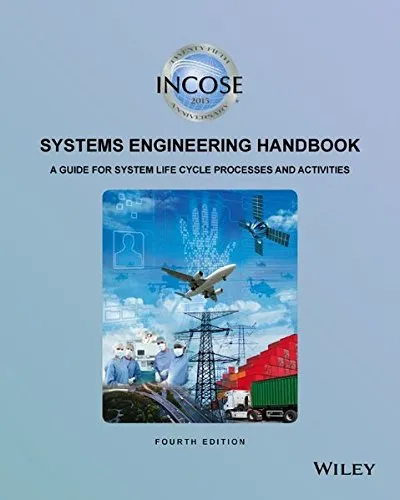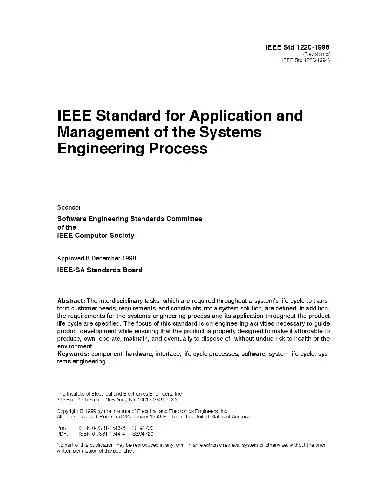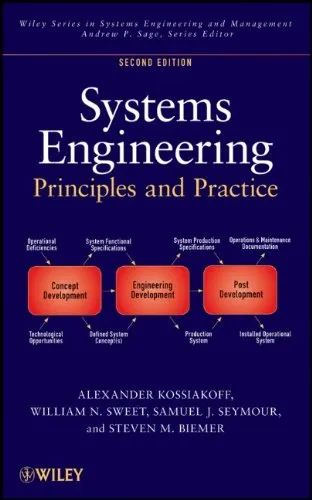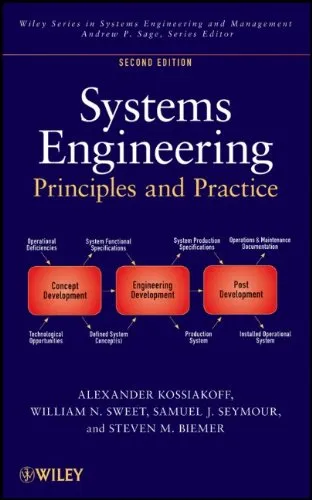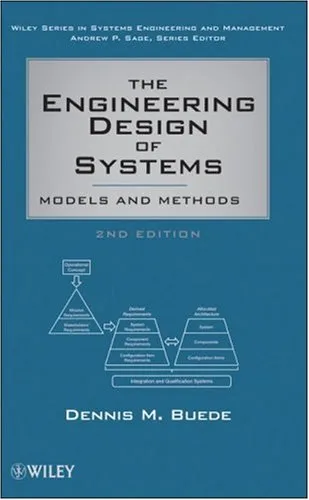INCOSE Systems Engineering Handbook: A Guide for System Life Cycle Processes and Activities
4.6
Reviews from our users

You Can Ask your questions from this book's AI after Login
Each download or ask from book AI costs 2 points. To earn more free points, please visit the Points Guide Page and complete some valuable actions.Related Refrences:
Introduction
The "INCOSE Systems Engineering Handbook: A Guide for System Life Cycle Processes and Activities" serves as an essential guide for anyone involved in systems engineering throughout the entire system life cycle. From initial concept through retirement, this comprehensive handbook provides a complete overview of systems engineering (SE) principles, practices, and methodologies. It is a valuable resource for both seasoned professionals and newcomers, offering insights into the nuances of SE and how it can be effectively applied to achieve successful system outcomes.
Detailed Summary of the Book
The handbook is structured to provide a robust understanding of systems engineering and the systems life cycle. It begins with foundational concepts, detailing the key processes involved in systems engineering, such as stakeholder needs and requirements definition, system analysis, architecture design, and implementation. It further delves into the verification and validation processes, highlighting the importance of systems integration. Each process is discussed with an emphasis on practical application, supported by examples and real-world case studies.
Moreover, the book thoroughly addresses the management aspects of SE, including risk management, configuration management, and technical leadership. It underscores the importance of interdisciplinary collaboration and provides frameworks for effectively managing complex projects. By the end of the handbook, readers will have a comprehensive understanding of the full systems life cycle process — from concept to disposal — and the critical role systems engineering plays within it.
Key Takeaways
Understanding the complete system life cycle and its critical phases.
The application of systems engineering processes to improve system performance.
Integration of technical and management processes to enhance project outcomes.
Strategies for risk management and the importance of stakeholder engagement.
Real-world applications of SE principles through case studies and practical examples.
Famous Quotes from the Book
“Systems engineering is not just about building systems. It’s about understanding and defining what those systems need to accomplish.”
“Effective collaboration and communication are the bedrock of successful systems engineering practice.”
Why This Book Matters
The importance of this handbook lies in its comprehensive coverage of systems engineering practices that are vital to the success of any engineering project. Systems engineering is depicted as an interdisciplinary approach that bridges the gap between engineering and management, making it an invaluable asset in any engineer's toolkit. This book matters because it not only provides theoretical insights but also practical guidance, making it applicable across a broad range of industries, from defense to healthcare.
By offering a detailed exploration of SE methodologies and techniques, the handbook equips systems engineers with the knowledge to address complex challenges and deliver high-quality systems. Its impact is seen in fostering a systematic approach to problem-solving and innovation, ensuring that readers are well-prepared to lead and contribute effectively to multidisciplinary projects.
Free Direct Download
You Can Download this book after Login
Accessing books through legal platforms and public libraries not only supports the rights of authors and publishers but also contributes to the sustainability of reading culture. Before downloading, please take a moment to consider these options.
Find this book on other platforms:
WorldCat helps you find books in libraries worldwide.
See ratings, reviews, and discussions on Goodreads.
Find and buy rare or used books on AbeBooks.
